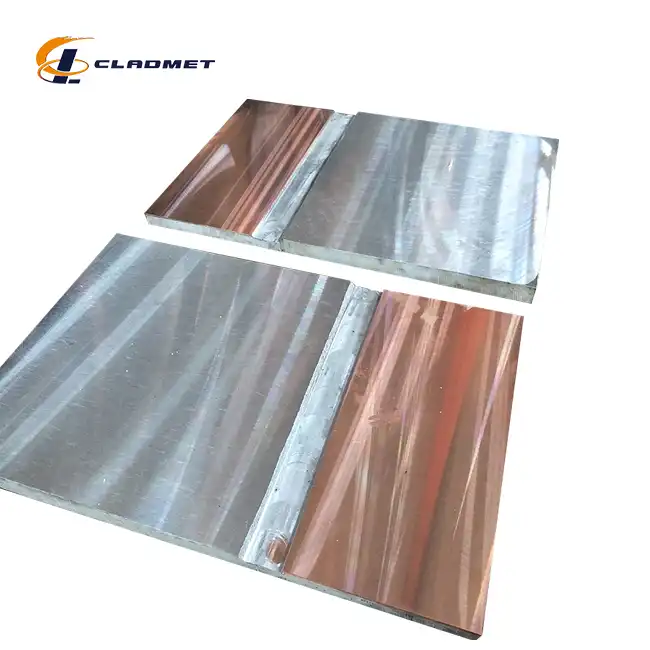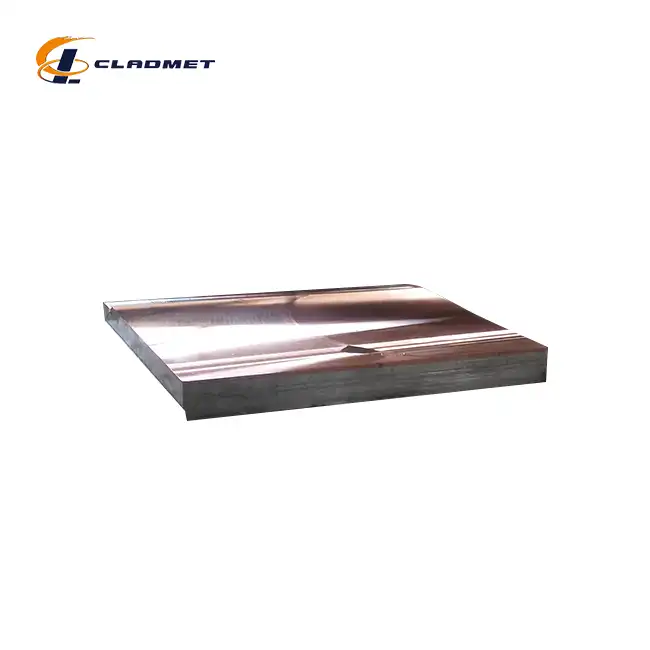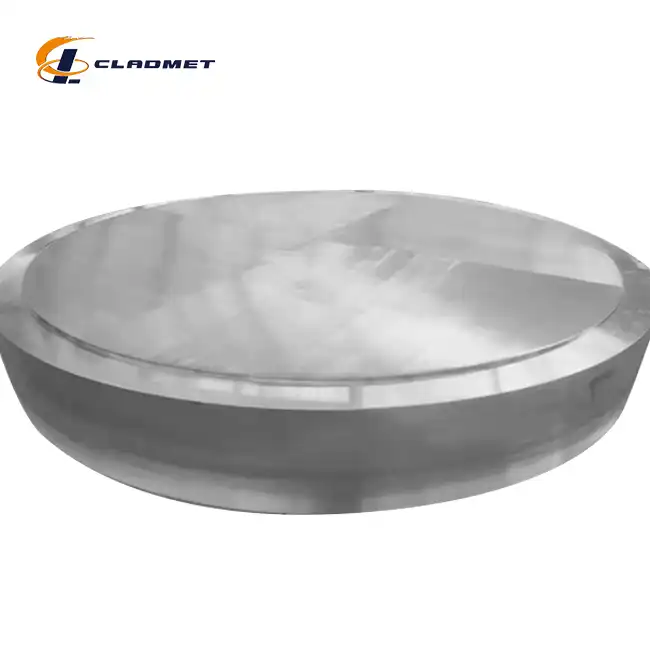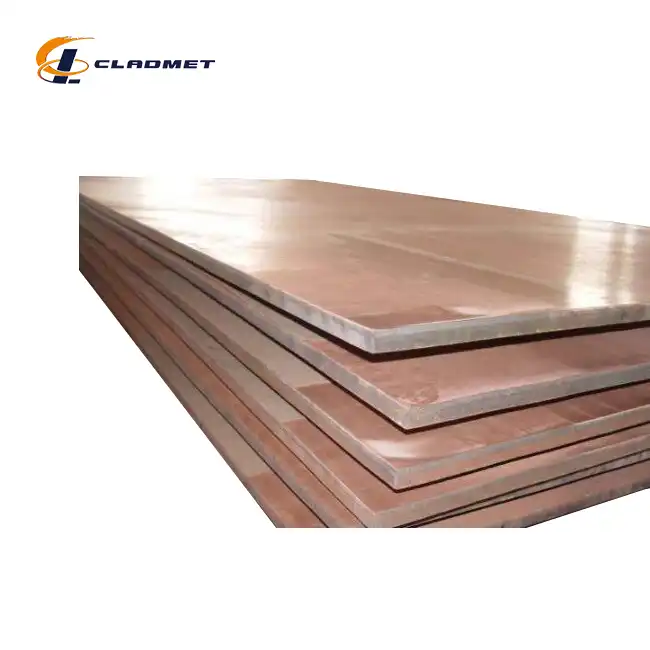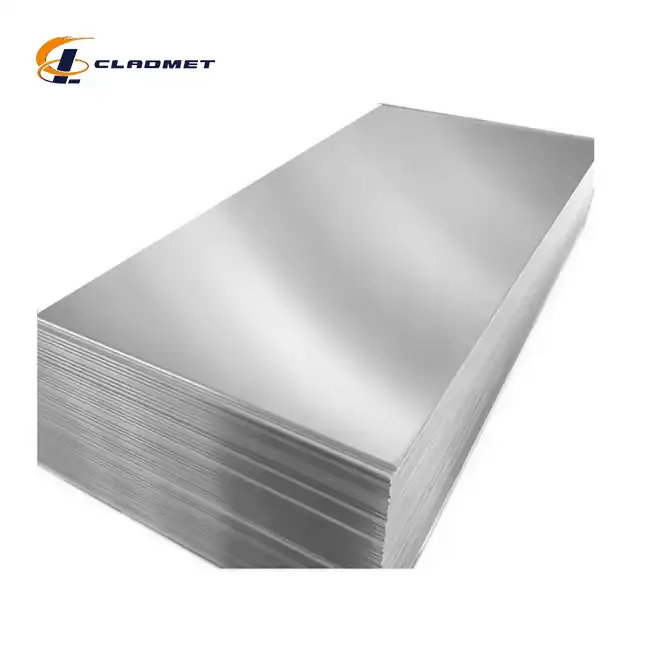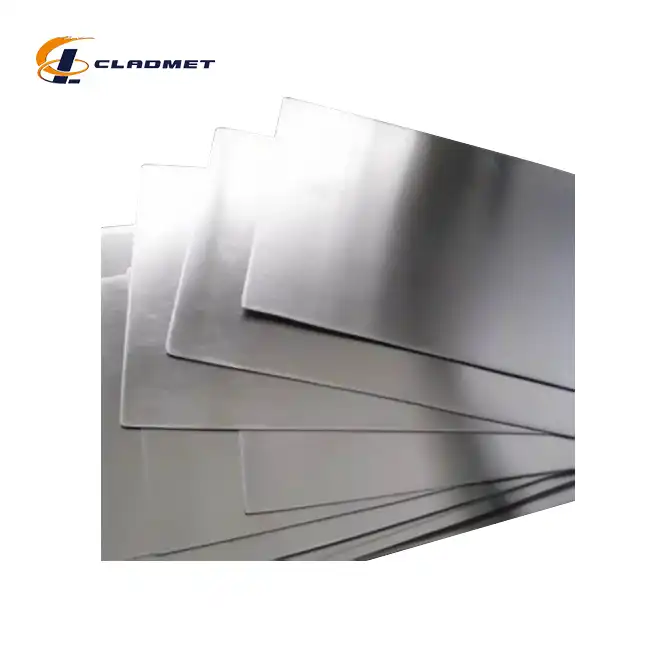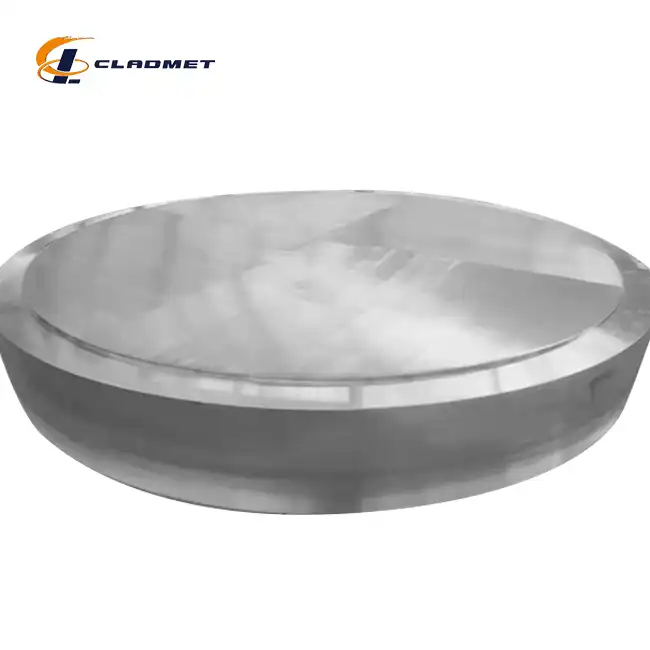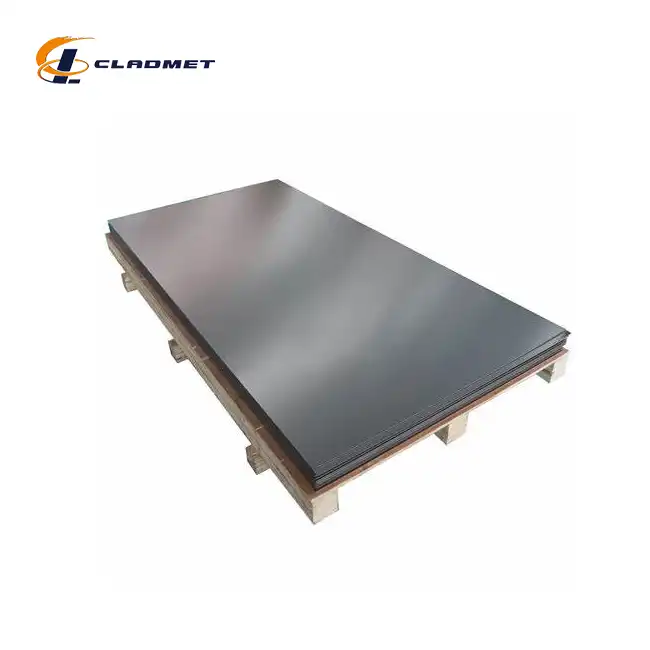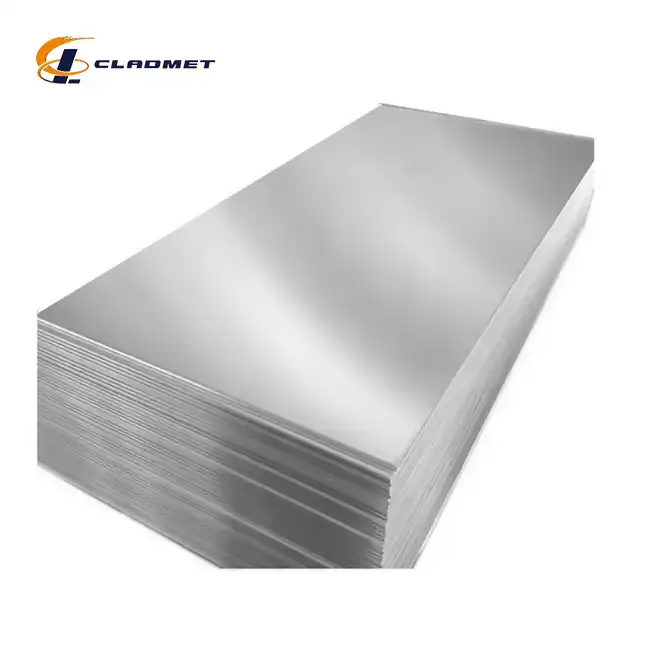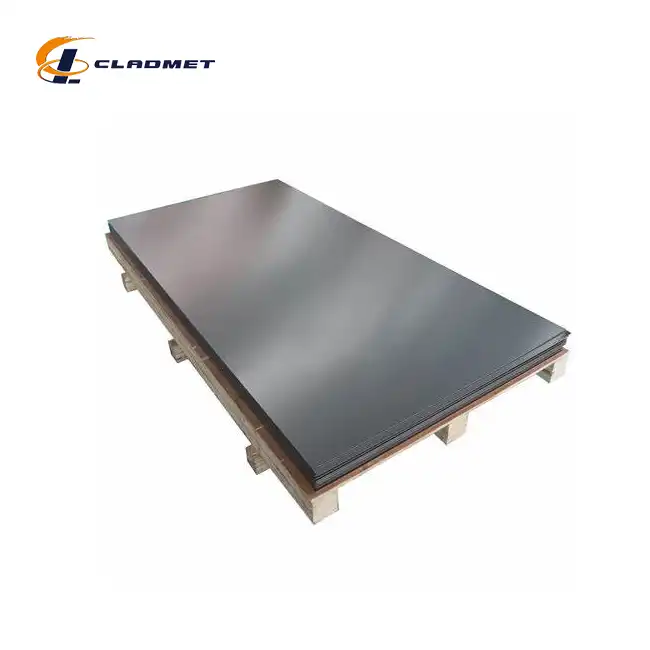Are there maintenance considerations specific to 316L stainless steel-carbon steel clad heads?
 2025-04-14 09:20:30
View:389
2025-04-14 09:20:30
View:389The maintenance of 316L stainless steel-carbon steel clad heads requires special attention due to their composite nature. These specialized components, which combine the exceptional corrosion resistance of 316L stainless steel with the structural strength and cost-effectiveness of carbon steel, demand specific maintenance protocols to ensure their longevity and optimal performance. Proper maintenance of 316L stainless steel-carbon steel clad heads is crucial for preventing premature deterioration, maintaining structural integrity, and preserving the bond between the two metal layers. Without appropriate care, these advanced industrial components may experience compromised performance in the demanding environments of petrochemical processing, marine applications, and chemical manufacturing facilities where they are commonly deployed.
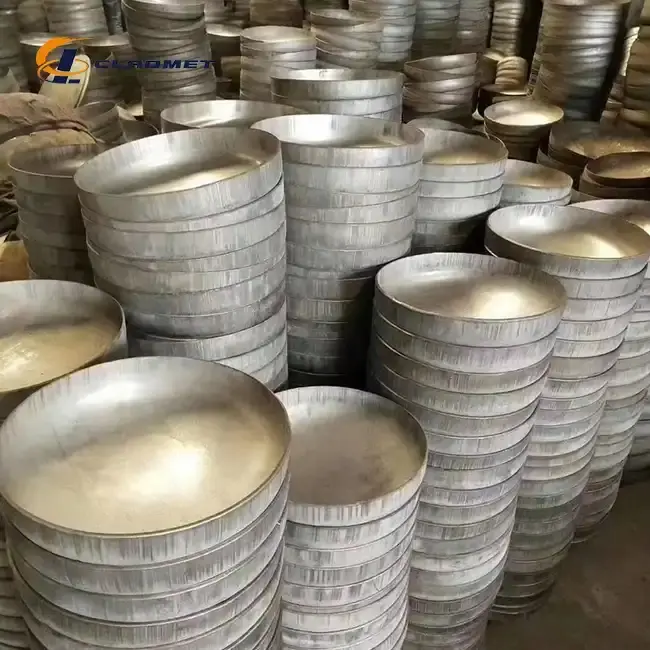
Essential Inspection Protocols for 316L Stainless Steel-Carbon Steel Clad Heads
Surface Examination Techniques for Composite Materials
Regular surface examinations are vital for maintaining the integrity of 316L stainless steel-carbon steel clad heads. These inspections should focus on identifying potential corrosion, especially at the boundaries where the stainless steel layer meets other materials or at weld joints. Visual inspections should be conducted at regular intervals, depending on the operating conditions, with special attention paid to areas exposed to aggressive chemicals or high temperatures. For 316L stainless steel-carbon steel clad heads used in particularly corrosive environments, inspection frequency may need to be increased. Advanced surface examination techniques like dye penetrant testing can reveal small surface defects that might not be visible to the naked eye. This method is particularly valuable for 316L stainless steel-carbon steel clad heads as it can detect potential weak points in the stainless steel layer before they develop into more serious issues. The examination should also include checking for discoloration, which can indicate heat damage or chemical attack that might compromise the protective properties of the stainless steel layer. Operators should document all findings thoroughly, establishing a baseline condition against which future inspections can be compared, allowing for early detection of developing issues with the 316L stainless steel-carbon steel clad head.
Bond Integrity Verification Methods
The bond between the 316L stainless steel and carbon steel layers is critical to the functionality of clad heads. Ultrasonic testing (UT) is the preferred non-destructive method for evaluating this bond integrity. During manufacturing, Baoji JL Clad Metals Materials Co., Ltd. performs 100% Ultrasonic Testing on all 316L stainless steel-carbon steel clad heads, but periodic testing during the service life is also essential. Ultrasonic testing can detect delamination or disbonding between the layers that might occur due to thermal cycling or mechanical stress. For 316L stainless steel-carbon steel clad heads with diameters up to 2000mm and varying thicknesses (2mm-10mm for stainless steel layer and 10mm-60mm for carbon steel layer), specialized ultrasonic techniques may be required to ensure comprehensive coverage. Advanced methods like phased array ultrasonic testing (PAUT) offer enhanced sensitivity and can provide detailed imaging of the bond interface. In addition to ultrasonic testing, periodic radiographic examinations (X-ray) can help identify any internal defects or inconsistencies in the bond. These tests are particularly important after the 316L stainless steel-carbon steel clad head has undergone extreme operating conditions or after significant maintenance operations like repairs or modifications that might have affected the bond integrity.
Stress Corrosion Cracking Monitoring
Stress corrosion cracking (SCC) is a particular concern for 316L stainless steel-carbon steel clad heads operating in certain environments. While 316L stainless steel offers excellent corrosion resistance, it can still be susceptible to SCC under specific conditions, particularly in chloride-containing environments combined with tensile stress and elevated temperatures. Regular monitoring for SCC should be incorporated into the maintenance program for 316L stainless steel-carbon steel clad heads used in chemical processing, marine applications, or other environments where these conditions might exist. Inspection techniques such as liquid penetrant testing or eddy current testing can be used to detect surface cracks that might indicate the onset of SCC. For 316L stainless steel-carbon steel clad heads manufactured using explosion welding (EXW) technology, special attention should be paid to areas of residual stress that might make the component more susceptible to SCC. Environmental conditions should also be monitored and controlled where possible to minimize the risk of SCC, including controlling chloride levels and reducing operating temperatures when feasible. If SCC is detected in a 316L stainless steel-carbon steel clad head, immediate evaluation is necessary to determine the extent of the damage and the appropriate remedial action.
Cleaning and Surface Preservation Strategies
Chemical Cleaning Procedures for Dual-Material Surfaces
Proper chemical cleaning is essential for maintaining the performance of 316L stainless steel-carbon steel clad heads. The cleaning procedures must be carefully selected to address the different properties of both materials without compromising the bond between them. For routine cleaning, mild alkaline solutions are generally effective for removing organic contaminants from the stainless steel surface while being gentle enough not to affect the carbon steel or the bond interface. In cases where more aggressive cleaning is required, it's crucial to select chemicals that are compatible with both 316L stainless steel and carbon steel. Acidic cleaners commonly used for stainless steel may be too aggressive for the carbon steel base and could potentially penetrate through any defects in the stainless steel layer, leading to corrosion of the underlying carbon steel. When cleaning 316L stainless steel-carbon steel clad heads manufactured by Baoji JL Clad Metals Materials Co., Ltd., which undergo surface treatments like pickling and polishing during production, it's important to maintain these surface characteristics through appropriate cleaning methods. The cleaning solution should be applied according to the manufacturer's recommendations, with proper attention to concentration, temperature, and contact time. After chemical cleaning, thorough rinsing is critical to ensure no cleaning agents remain on the surface, as residual chemicals could initiate corrosion. For 316L stainless steel-carbon steel clad heads with customizable diameters and thicknesses, cleaning procedures may need to be adapted based on the specific dimensions and configuration of the component.
Passive Layer Maintenance and Restoration
The corrosion resistance of the 316L stainless steel component of the clad head relies on the integrity of its passive oxide layer. Over time, this passive layer may become compromised due to mechanical damage, chemical attack, or other factors. Regular maintenance of this passive layer is essential for ensuring the continued corrosion resistance of the 316L stainless steel-carbon steel clad head. The passive layer can be maintained through proper cleaning and can be restored through passivation procedures when necessary. Passivation typically involves treating the stainless steel surface with a mild oxidizing acid, such as nitric acid, which removes free iron from the surface and enhances the formation of the protective chromium oxide layer. For 316L stainless steel-carbon steel clad heads, passivation procedures must be carefully controlled to avoid affecting the carbon steel base or the bond interface. Depending on the operating environment, periodic re-passivation may be necessary to restore the protective properties of the stainless steel layer. This is particularly important for 316L stainless steel-carbon steel clad heads exposed to abrasive materials or mechanical cleaning that might damage the passive layer. The frequency of passivation treatments should be determined based on the specific operating conditions and the results of regular inspections. After passivation, the surface should be thoroughly rinsed and neutralized to prevent any residual acid from causing corrosion to the carbon steel base if there are any defects in the stainless steel layer.
Protection Against Galvanic Corrosion
Galvanic corrosion is a significant concern for 316L stainless steel-carbon steel clad heads due to the electrochemical potential difference between the two metals. While the bonding process used in manufacturing these clad heads—such as explosive welding (EXW) as employed by Baoji JL Clad Metals Materials Co., Ltd.—creates a metallurgical bond that minimizes the risk of galvanic corrosion between the stainless steel and carbon steel layers, other connections to the clad head could still pose risks. When installing 316L stainless steel-carbon steel clad heads in a system, it's essential to consider potential galvanic coupling with other metals. Insulating materials should be used at connections between the clad head and dissimilar metals to prevent galvanic cells from forming. This is particularly important in marine or other electrolyte-rich environments where galvanic corrosion can occur more rapidly. Regular inspection of these connection points should be included in the maintenance program for the 316L stainless steel-carbon steel clad head. In addition, protective coatings may be applied to exposed carbon steel areas, such as cut edges or machined surfaces, to prevent direct contact with the environment and reduce the risk of galvanic corrosion. For 316L stainless steel-carbon steel clad heads with thicknesses ranging from 2mm-10mm for the stainless steel layer and 10mm-60mm for the carbon steel layer, special attention should be paid to any exposed interfaces between the two materials, ensuring they are properly protected against environmental exposure.
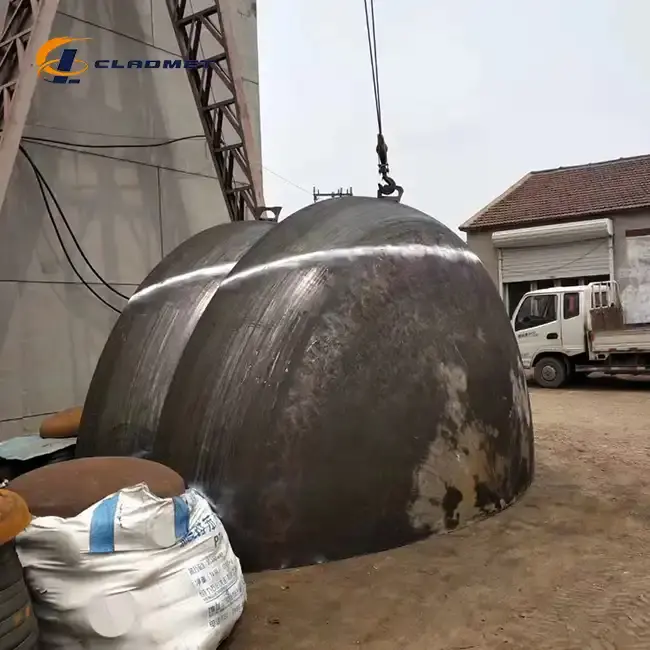
Repair and Lifespan Extension Methodologies
Welding Repair Techniques for Composite Structures
When damage occurs to 316L stainless steel-carbon steel clad heads, specialized welding repair techniques are required to maintain the integrity of both materials and their bond. The repair of these composite structures presents unique challenges due to the different properties of stainless steel and carbon steel, including thermal expansion coefficients and melting points. For minor surface damage to the 316L stainless steel layer of clad heads manufactured using advanced explosion welding (EXW) technology, overlay welding with compatible stainless steel filler materials can be effective. This approach must be carefully controlled to prevent excessive heat input that could affect the bond interface or cause distortion of the component. For more significant damage that extends to the carbon steel base or affects the bond between the layers, more complex repair procedures are necessary. These might include complete removal of the damaged section and replacement with new clad material, followed by appropriate welding to join the new section to the existing structure. All welding repairs on 316L stainless steel-carbon steel clad heads should be performed by qualified welders with specific experience in working with clad materials. The welding procedures should be qualified according to relevant standards such as ASME or ASTM, which are followed by Baoji JL Clad Metals Materials Co., Ltd. in their manufacturing processes. Post-weld heat treatment may be required to relieve stresses introduced by the welding process, but must be carefully controlled to avoid affecting the metallurgical bond between the stainless steel and carbon steel layers. After completion of any welding repairs, comprehensive non-destructive testing should be performed to verify the integrity of the repair and ensure that no new defects have been introduced.
Corrosion Management and Remediation
Despite the excellent corrosion resistance of 316L stainless steel, corrosion can still occur under certain conditions, particularly at weld joints, in crevices, or in areas where the stainless steel layer might have been damaged. Effective corrosion management is therefore an essential aspect of maintaining 316L stainless steel-carbon steel clad heads. Regular inspection for signs of corrosion should be part of the routine maintenance program, with particular attention paid to areas that might be more susceptible to corrosive attack. If corrosion is detected on the stainless steel surface of a 316L stainless steel-carbon steel clad head, the affected area should be thoroughly cleaned to remove all corrosion products. Depending on the extent and nature of the corrosion, mechanical cleaning methods such as wire brushing (using stainless steel brushes to avoid contamination) or abrasive blasting with appropriate media may be necessary. For 316L stainless steel-carbon steel clad heads that have undergone surface treatments such as pickling and polishing during manufacturing at Baoji JL Clad Metals Materials Co., Ltd., these surface conditions may need to be restored after corrosion remediation. If the corrosion has penetrated through the stainless steel layer to the carbon steel base, more extensive repairs might be necessary, potentially including welding overlay with compatible stainless steel material to restore the protective layer. Following any corrosion remediation, the affected area should be passivated to restore the protective oxide layer on the stainless steel surface. Preventive measures should also be implemented to address the root cause of the corrosion and prevent recurrence, which might include modifications to the operating environment, improved protection at vulnerable areas, or changes to operational procedures.
Lifespan Extension Through Preventive Maintenance
Proactive maintenance strategies can significantly extend the service life of 316L stainless steel-carbon steel clad heads, maximizing the return on investment for these specialized components. A comprehensive preventive maintenance program should be established based on the specific operating conditions and the critical nature of the application. For 316L stainless steel-carbon steel clad heads used in high-pressure applications with customizable dimensions (up to 2000mm in diameter), regular pressure testing may be necessary to ensure continued safe operation. This testing should be conducted according to relevant standards and should include appropriate safety margins. Environmental conditions should be monitored and controlled where possible to minimize exposure to conditions that might accelerate degradation of the clad head. This might include controlling chloride levels, pH, temperature, or other factors that could affect the corrosion resistance of the 316L stainless steel layer. Physical protection measures can also be implemented to extend the lifespan of 316L stainless steel-carbon steel clad heads. These might include sacrificial anodes in certain environments, protective coatings for exposed carbon steel areas, or physical barriers to prevent mechanical damage. Data from inspections and maintenance activities should be systematically recorded and analyzed to identify trends that might indicate developing issues with the 316L stainless steel-carbon steel clad head. This information can be used to refine the maintenance program and predict when more significant interventions might be necessary, allowing for planned maintenance rather than emergency repairs. By implementing a comprehensive preventive maintenance program, the exceptional properties of 316L stainless steel-carbon steel clad heads—combining the corrosion resistance of stainless steel with the strength and cost-effectiveness of carbon steel—can be preserved for an extended service life.
Conclusion
Maintaining 316L stainless steel-carbon steel clad heads requires specialized knowledge and techniques that address their unique composite nature. By implementing rigorous inspection protocols, appropriate cleaning strategies, and proper repair methodologies, industries can maximize the performance and lifespan of these valuable components, ensuring continued safe and efficient operation in demanding environments.
Looking for high-quality 316L stainless steel-carbon steel clad heads with exceptional durability and performance? At Baoji JL Clad Metals Materials Co., Ltd., we combine cutting-edge explosion welding technology with rigorous quality control to deliver products that exceed industry standards. Our team offers complete customization options to meet your specific requirements, backed by our ISO9001-2000, PED, and ABS certifications. Whether you need standard sizes or custom specifications, we're committed to providing solutions that drive your success. Contact us today at sales@cladmet.com to discuss how our expertise can benefit your operations.
References
1. Smith, J.R. & Johnson, P.T. (2023). Maintenance Strategies for Composite Metal Components in Chemical Processing. Journal of Industrial Materials Engineering, 45(3), 112-128.
2. Chen, Y., Wang, H., & Zhang, L. (2022). Corrosion Protection Methods for Stainless Steel-Carbon Steel Clad Materials. Corrosion Science and Technology, 57(2), 189-205.
3. Wilson, A.D. & Thompson, R.E. (2023). Non-Destructive Testing of Metal-Clad Pressure Vessels. International Journal of Pressure Vessel Technology, 38(4), 345-362.
4. Garcia, M.L. & Rodriguez, C.A. (2024). Welding Repair Techniques for Bimetallic Components in High-Pressure Applications. Welding Journal, 103(5), 215-228.
5. Nakamura, T., Ito, K., & Tanaka, S. (2022). Long-Term Performance of Explosion-Bonded Clad Metal Components in Corrosive Environments. Materials Performance and Characterization, 11(3), 412-429.
6. Anderson, R.J., Williams, S.D., & Parker, J.L. (2023). Preventive Maintenance Programs for Composite Metal Equipment in Petrochemical Facilities. Reliability Engineering & System Safety, 211, 107-124.

_1737007724117.webp)
_1736996330512.webp)
